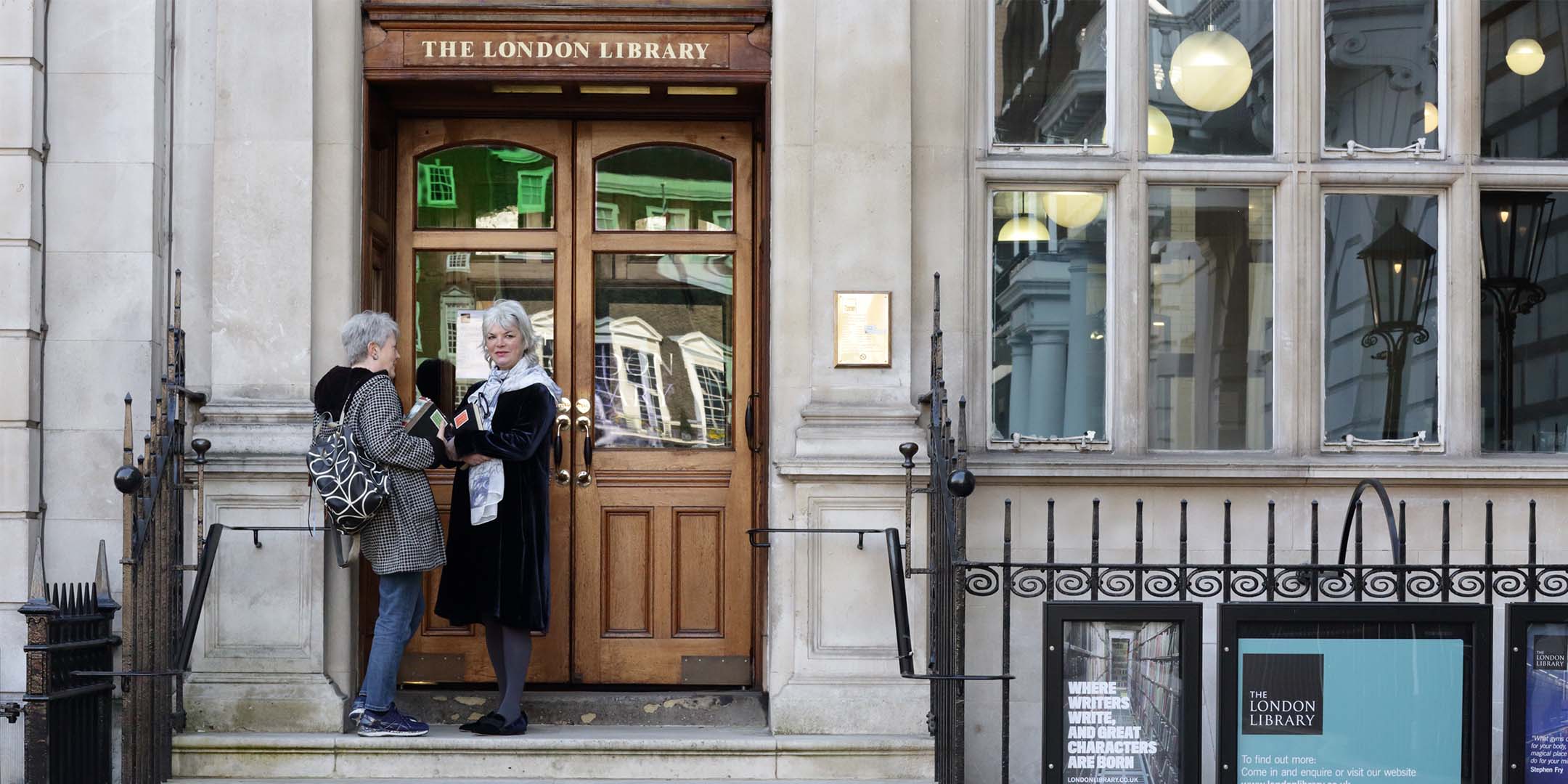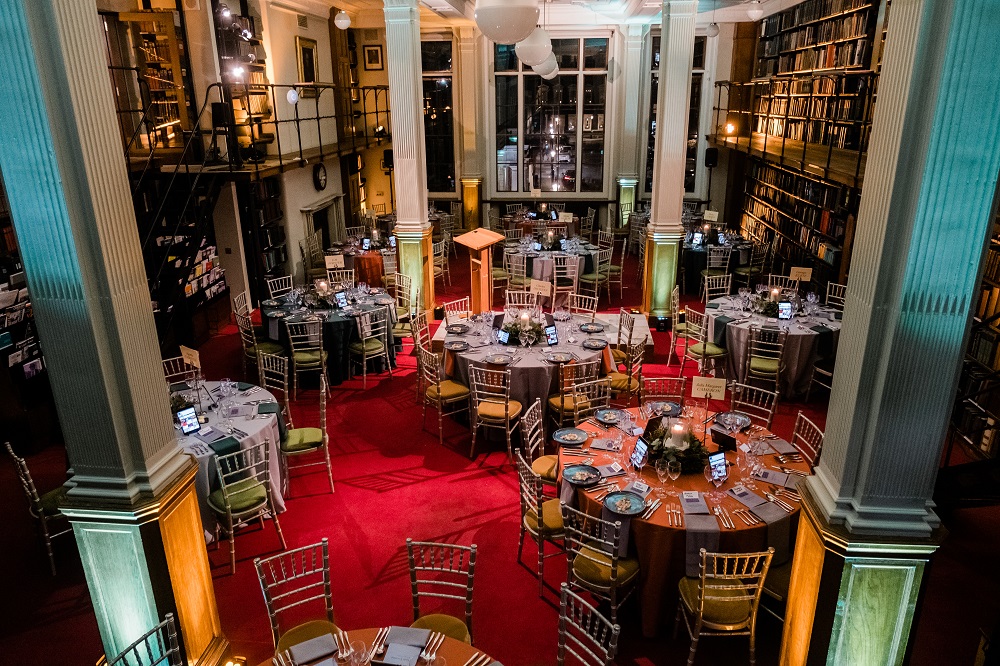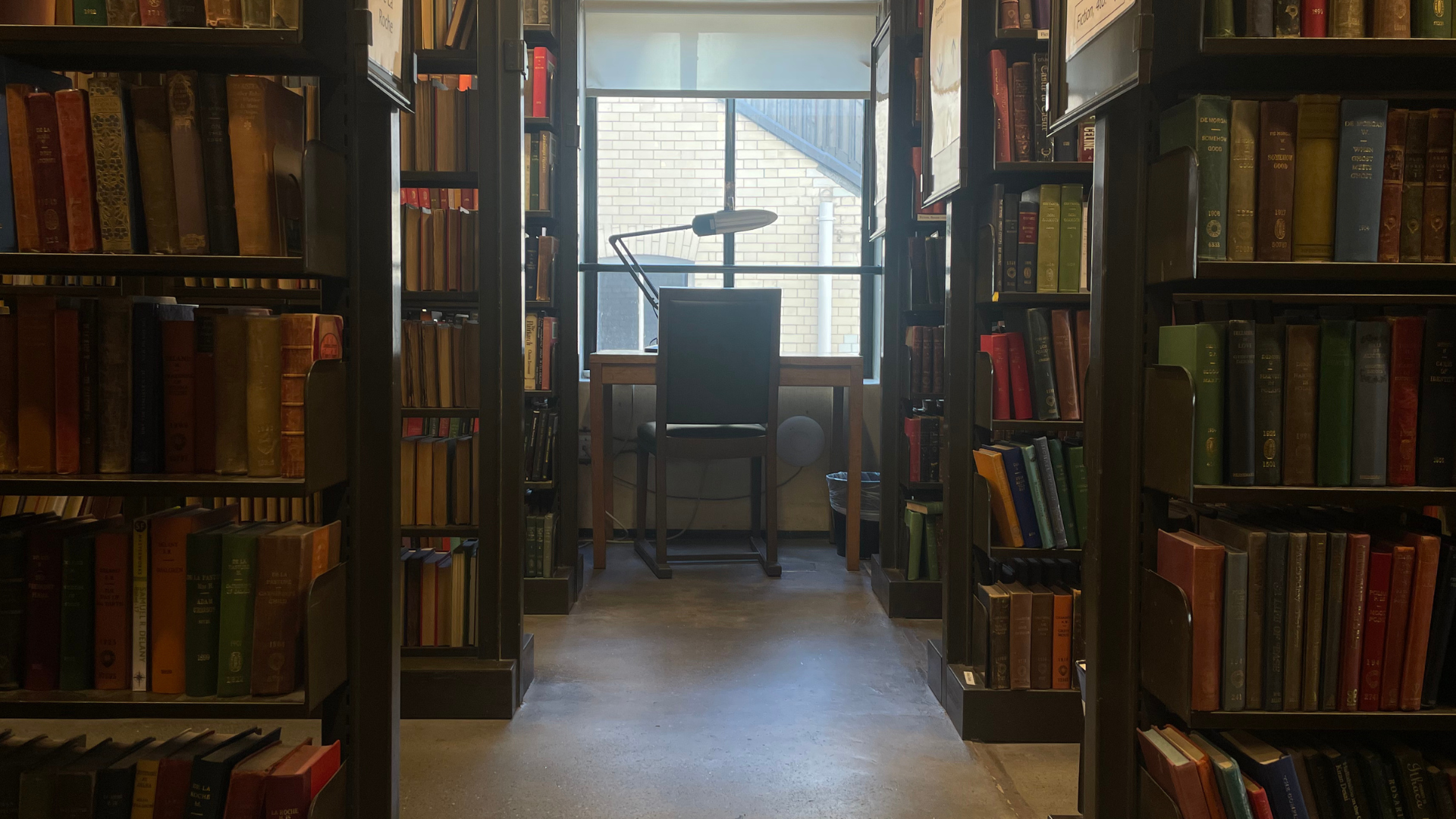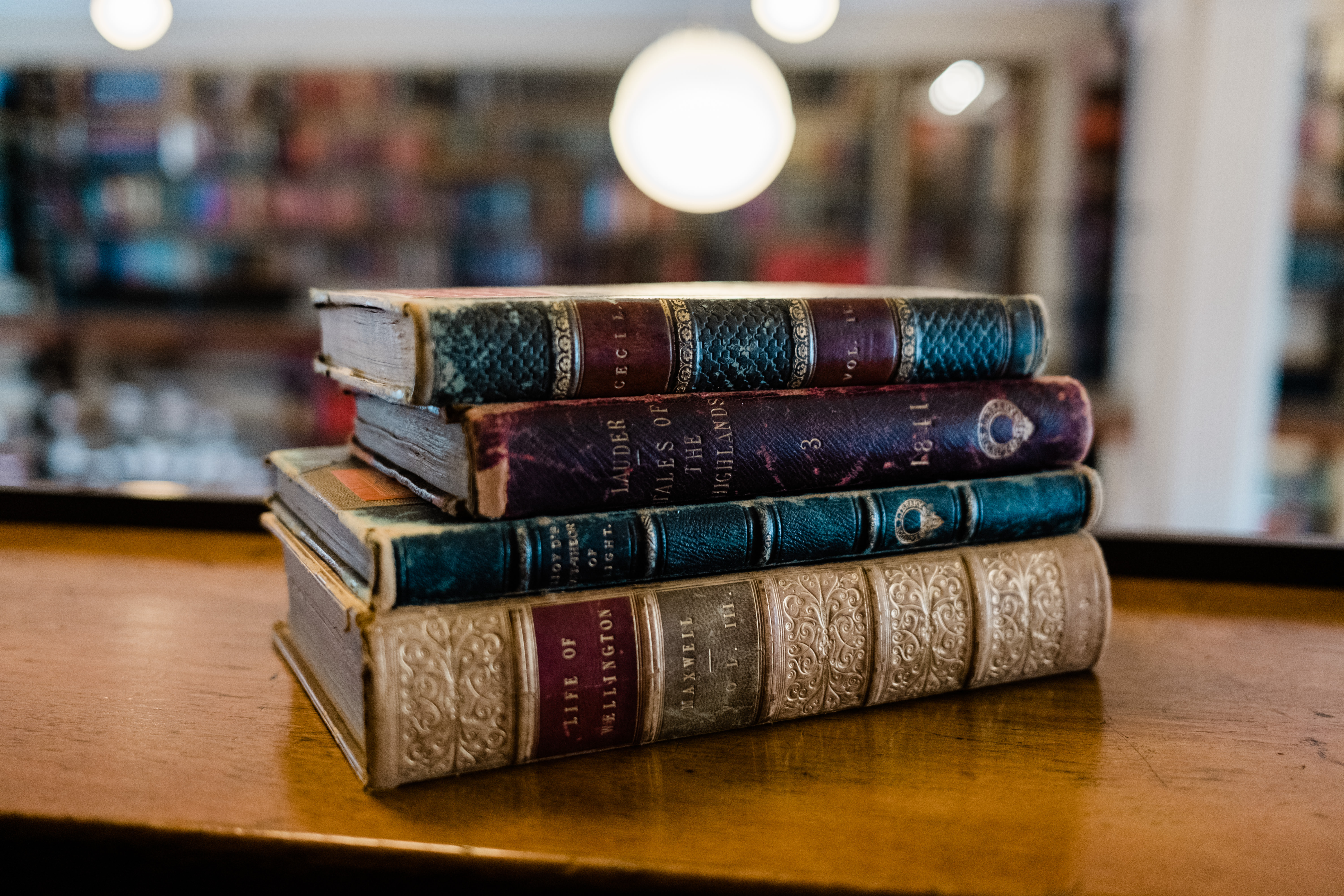Beyond the sparkle, glitz and John Lewis adverts that saturate the nation’s sensibilities during the ‘festive’ period, The London Library’s fifteen miles of shelving offer a glimpse into the more forgotten, obscure customs and ideas surrounding the theme of Good Will. As well as Christmas with Rumpole, Poirot, and Nancy Mitford nestled in the Literature stacks, transcriptions of the Royal Institution Christmas Lectures and poetry on the Christmas Truce of The Great War, we’ve picked some of the seasonal shelfmarks well worth exploring at The London Library.
S. Christmas &c.
This lean yet fascinating shelfmark is a rich seam of seasonal surprises. ‘Cakes and Characters, An English Tradition’ is Bridget Ann Henisch’s examination of how the once ubiquitous, now historic ‘Twelfth cake’ became the plain old Christmas cake. ‘Kings and Queens, Lovers and Ladies, Captains and Dandies’ once played an important role in the construction of this giant symbolic bake once adorned with ‘characters’ who originated from the ancient Saturnalia festival, celebrated on 17 December. You’ll also discover that Dickens and Thackeray, key figures in London Library history, played an important part in this delicious story… (More on Saturnalia can be found in Macrobius Ambrosius Theodosius’s writings from the fifth century in his compendium of ancient Roman religious and antiquarian lore in L. Greek & Latin Lit., Trans!).
Chapters on Christmas and Materialism, The Rituals of Christmas Giving and Cinderella Christmas: Kitsch, Consumerism and Youth in Japan provide different food for thought in Unwrapping Christmas, a collection of comforting anthropological essays to keep close to hand when the pressure to consume gets too much…Furthermore, topics such as Victorian Miscellany, The Strange History of Father Christmasand Christmas Under the Puritans from The Englishman’s Christmasmight be helpful for the revival of old customs. In the Spirit of ‘Make do and Mend’, try making a beautiful wartime Anderson Shelter in cake form in Mike Brown’s Christmas on the Home Front!
Christmas is cancelled; ‘Prophane Customs’ in Puritan New England
A particularly terrifying volume can be found nestling in R. Religious & Theol. Lit. Written by the fantastically named Increase Mather, Rector of Harvard College, Massachussets in 1687, this discourse against Having Fun over the ‘festive’ period covers the Profane and Superstitious Customs practised in New England at the time. Enjoy the anti-pious activities of ‘health-drinking, dicing, cards, and Christmas-keeping’ at your peril!
Testimony against prophane customs : namely, health drinking, dicing, cards, Christmas-keeping, New Year’s gifts, cock-scaling, saints’ days, etc / Reprinted from the 1687 ed., with an introd. and notes by William Peden, and a bibliographical note by Lawrence Starkey. You have been warned!
R. Druids, R. Paganism
By way of introduction to the Library’s volumes on the alternative rituals to keep the spirits at bay and ensure the return of the light, the world of paganism at the Winter Solstice is beautifully explored in Diane Maclean’s article on the role of Scottish druids
Mummers
If the thought of entertaining your favourite small people as the school holidays get underway fills you with fear, then we recommend you come to the 6th floor, borrow Juliana Horatia Ewing’s The Peace Egg, A Christmas Mumming Play and stage an alternative Christmas production! ‘Written expressly for all Mummers, to commemorate the Holy Wars, and the happy Festival of Christmas. No scenery is required.” Dragons and Knights replace shepherds, Wise Men and donkeys – much more fun for dressing up than the customary Nativity tea-towels/dressing gown costume creations!
More on the wonderful English Mummers tradition can be sourced by finding The English Mummers Play, Alex Helm’s publication in Societies, Folk-Lore Soc., 4to., or Sidney Oldall Addy’s 1907 publication Guising and Mumming in Derbyshire in T. England, Derbyshire. In L English Drama, find Thomas Hardy’s 1923 (not so)famous tragedy of the Queen of Cornwall at Titagel in Lyonesse : “a new version of an old story arranged as a play for mummers in one act requiring no theatre or scenery.”
Perhaps combine it with some readings from 1960s classic anthology Our American Holidays, Christmas its origin, celebration and significance’ as related in prose & verse ed. by Robert Haven Schauffler.
‘Two Planks and a Passion’; S. Skating & Skiing
At the top of the dark, cosy 1890s bookstacks you will find a series of guides to Skating and Skiing, with particular focus on these beautifully illustrated volumes from the early 20th Century. How to ski and how not to; the ideal winter travelling companion/cautionary tale from 1911!
Finally, after exploring the treasures of R. Religions of the World and, R. Church Festivals, why not stop at shelfmark R. Fanaticism & Enthusiasm – for those who really do wish it could be Christmas every day…
Make membership to The London Library the ultimate Christmas gift for those who love books. Buying a gift membership – at just over £1 a day, this Christmas present will instil a lifelong love of books and is a richly rewarding way of giving to charity.
Half price for young people and spouses/partners of members – the perfect gift for children, god-children and your ‘better’ half! Buy online.







































